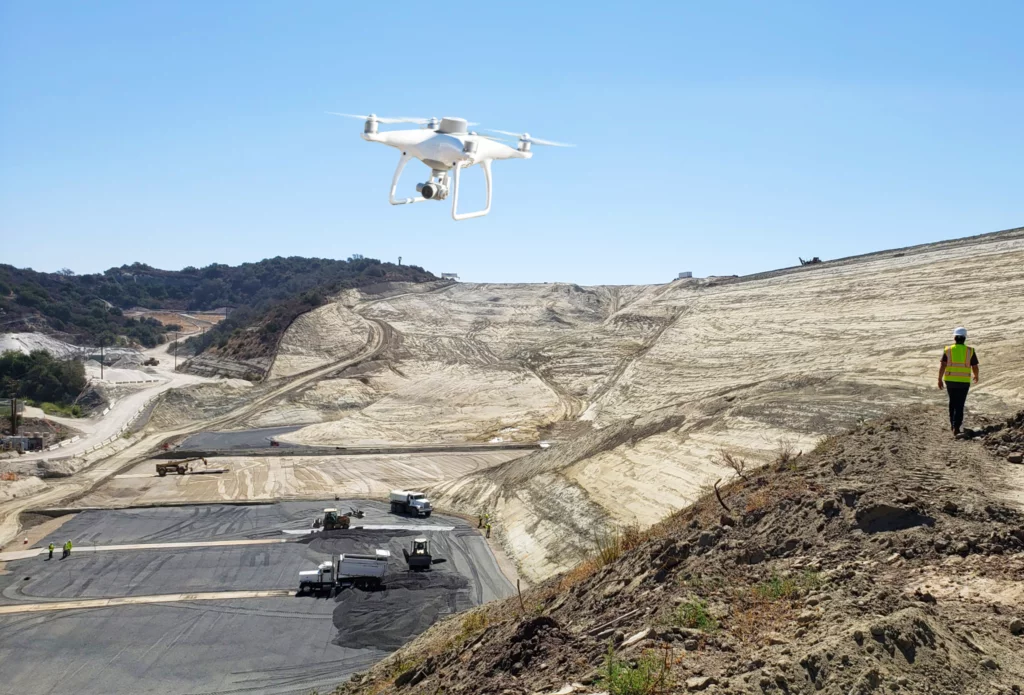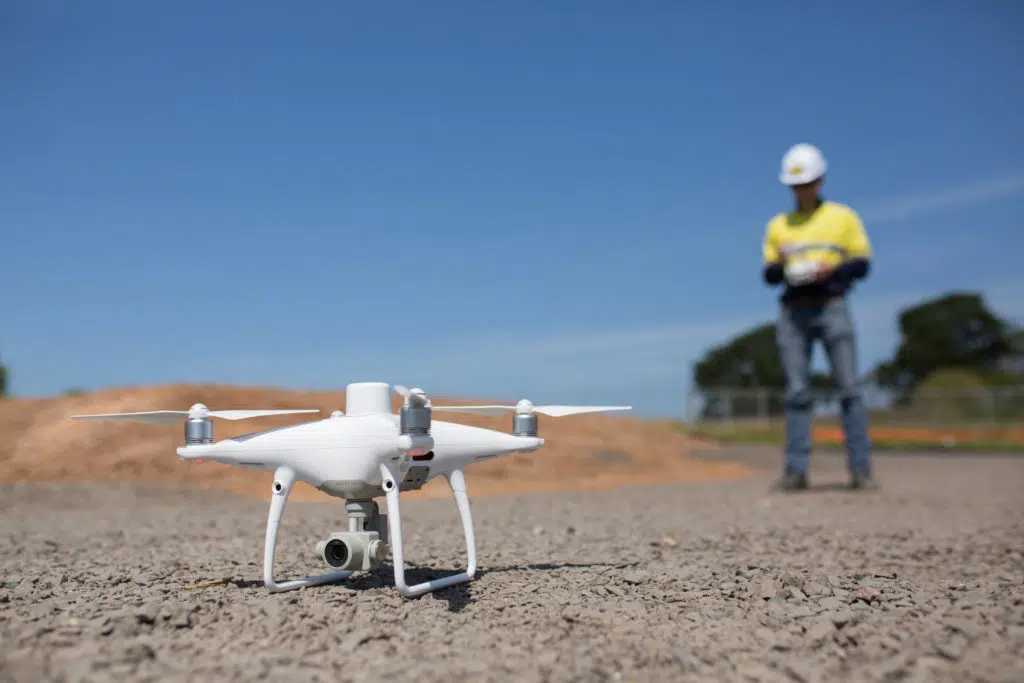Propeller Tech Support 101: How We Provide Remote Hardware Support
As a global company, Propeller succeeds because we thrive at working remotely. Whether it’s troubleshooting hardware issues in real time, training workers on how best to use our platform, or advocating for customers’ needs from the other side of the planet, we’re committed to providing the best service possible from a distance.
This is one in a series of posts highlighting our remote support capabilities and the individuals powering that support system.
In this post, we spoke to Brendan Miracle, one of Propeller’s tech support engineers, about how he and his team provide remote support to our customers.
100% remote hardware troubleshooting
While our Customer Success team is trained to help customers out with the Propeller Platform, and Data Success is devoted to processing the most accurate data possible, our top-notch Tech Support team specializes in hardware. For now, that means two things:
- Aeropoints, our easy-to-use ground control points
- Drones, including DJI’s Phantom 4 RTK, which you can use with Propeller’s PPK workflow
We all know hardware issues can create huge roadblocks when it comes to gathering the drone data on site. No matter how frequently you survey your site, not being able to collect that data on the day you’re scheduled can cause project delays, data gaps, and lost revenue.
To keep those hardware problems at bay, we put an entire team in place to make sure you’re able to survey when you want to.
For example, if you’re having problems uploading data from your AeroPoints or properly calibrating your drone, Propeller Tech Support is your go-to team.
“If customers are having an issue,” says Brendan, “they can contact us for anything they need. We’re all about helping people out in the field, in the moment, collecting data.”

Being able to get on the phone with a Propeller tech support engineer who not only understands our technology backwards and forwards, but recognizes the specific pain points those in the earthwork and civil construction industries are constantly trying to overcome, can be hugely beneficial.
“While most of us have done site visits and have tagged along on various projects—it is something that we definitely value doing—we never have to go onsite to troubleshoot something,” says Brendan. “It’s all done 100% remotely, which is useful to both us and our customers, as troubleshooting remotely causes less of a disruption to the customer’s workday.”
Coaching you through takeoff and beyond
In addition to troubleshooting hardware hiccups as they arise, Propeller Tech Support is also available to help familiarize customers with the tech they’ll be handling during their drone surveying infancy.
“There’s definitely a learning curve that’s different for everyone,” says Brendan. “We get more calls at the beginning of a customer’s life cycle where they are relying on Tech Support and their customer success engineer for training. In those times, a lot of the calls and emails are about understanding the Aeropoints and drones and how to use them together.”
“With Aeropoints, it’s a lot of teaching people layouts, how to spread them out properly, how to use them properly. On the drone side of things, those issues can be a little more complex, because drones are more complex than Aeropoints. You have to consider where you are telling them to fly, what physical obstacles might be in the way, what invisible obstacles might be in the way, such as airspace.”

Other common issues that first-time (and even veteran) drone pilots might encounter range from a failure to install firmware updates to inputting improper mission settings—which can all easily be handled by our tech support engineers.
While Brendan and his team spend most of their days providing over-the-phone hardware support, they also take time to proactively create resources customers can use for continued self-training.
“When we’re not dealing with customer inquiries, when we have a little bit of time in between cases, we’re working on a lot of documentation—writing help articles for our knowledge base that customers can refer to as an extra resource.”
In an attempt to make our knowledge base an even stronger resource, Brendan and his team recently revamped it to improve searchability and make it more user-friendly—just one of the many ways Tech Support is going out of their way to meet customers’ needs.
Choose your channel of communication
Propeller Tech Support (as well as our Customer Success team) can be reached in three different ways:
- Chat (accessible in the Propeller Platform)
- Phone (available to Propeller software customers only)
“Between our four full-time Tech Support people that we have in the U.S., I’d say we interact with 20 to 25 customers each, every day,” says Brendan. “That includes chat conversations, email conversations, and phone calls. On our busiest days, we receive about ten phone calls per team member.”
Depending on the complexity and urgency of your problem, as well as your own familiarity with the hardware, your choice of troubleshooting channel may vary. Maybe you just want to be pointed toward a how-to guide to fix the problem yourself. Maybe you want to take more time to write out your issue in detail. Or maybe you just value the human connection of a traditional phone call.
“For me, the best customer interactions are always over the phone,” says Brendan. “We had one newer customer who was calling in a bit more frequently than most, but every single time he called, it was me answering the phone, and we were able to develop a nice rapport.”
“That was pretty cool, having this guy recognize that I wasn’t just an agent on the other side of the phone, that I was an actual person. When you help someone and they actually take a moment to say, ‘thank you for all of the help you’ve provided me over the last week,’ that’s huge.”
Leverage our industry expertise
Propeller continually strives to create a company comprised of the best minds in the drone analytics space. When you speak with any of our remote support specialists, you won’t just be dealing with someone who has a grasp on our own technology; nearly all of our tech support engineers came to Propeller with some related hardware experience, a deep understanding of GIS and photogrammetry, and some strong customer support experience under their belt.
“We have some great industry experts that are helping people over the phone and email every single day,” says Brendan. “I work on a team with some of the smartest people I’ve ever worked with. It’s very humbling to be on the team with such great experts in the field.”

Brendan himself has brought a wealth of drone-related experience to the Tech Support team.
“I started first messing around with drone surveying and drone mapping in college. That eventually turned into a job with my professors basically doing what Propeller is doing now—but on a much, much smaller scale. We were a three-person team and had only one customer. But there I was, helping to process all the imagery just like our Data Success team does now.
“Then, I got into some more mainline GIS work. I was training people on open-source GIS software through a grant from the National Geospatial-Intelligence Agency. I definitely learned a lot about creating help documents and teaching people the ins and out of GIS platforms.
“After that, I got in touch with Propeller. I had this good background of both drone surveying and teaching GIS software, so those set me up nicely for the Tech Support role I’m in now.”
And as you might expect from a bunch of drone-tech enthusiasts, everyone on our Tech Support team is licensed to pilot drones themselves. Each member of our U.S. team has their FAA Part 107 Remote Pilot Certificate, and those in our Sydney, Australia office have their CASA Remote Pilot License (RePL).
Seamless communication between teams
In addition to having remote access to our Tech Support team, every Propeller customer is assigned their own dedicated customer success engineer. While Tech Support handles the hardware side of things, CSEs work to ensure their customers understand the ins and outs of the Propeller Platform, and generally serve as the go-to people for any non-hardware-related needs.
“Tech Support is a subsection of Customer Success,” explains Brendan. “Even though we have that narrowed hardware scope, we’re always working very, very closely with the customer success engineers. In that way, we are able to make sure that everyone is succeeding in using our products.”
Together, it’s the ultimate goal of our global support organization to make sure every Propeller customer is able to easily and consistently capture, process, and analyze accurate survey data to improve overall efficiency on their worksite.
Reach out today to harness the power of Propeller’s support team and get your drone program off the ground!
Recommended Resources:
A Deep Dive into Propeller Support: How We Support Drone Programs Remotely
Photogrammetric Processing 101: To Self-Process, or to Not Self-Process?
[Webinar] Drone Survey Processing 101: To Self-Process, or to Not Self-Process?





